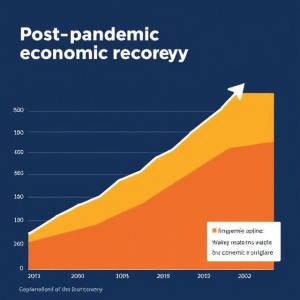Introduction
The COVID-19 pandemic reshaped global economies, exposing vulnerabilities while accelerating innovation. As nations transition from crisis management to long-term recovery, understanding post-pandemic economic recovery trends is critical for businesses, policymakers, and individuals. This article examines key drivers of growth, challenges, and actionable strategies shaping the new economic landscape.

The Rise of Hybrid Work Models
Keyword Focus: Remote work trends, hybrid workforce, post-pandemic labor shifts
The pandemic forced a rapid adoption of remote work, and its legacy endures. Over 58% of U.S. employees now work remotely at least part-time (Forbes, 2023). Companies like Google and Salesforce have embraced hybrid models, blending in-office collaboration with remote flexibility.
Implications for Recovery:
- Reduced overhead costs for businesses.
- Increased demand for digital collaboration tools (e.g., Zoom, Slack).
- Urban migration shifts as employees prioritize affordability.
Supply Chain Resilience and Localization
Keyword Focus: Supply chain diversification, nearshoring, post-pandemic logistics
Global supply chains faced unprecedented disruptions, prompting a reevaluation of dependency on single regions. The post-pandemic economic recovery has seen:
- Nearshoring: Companies relocating production closer to home (e.g., U.S. firms shifting from China to Mexico).
- Inventory Buffering: Stockpiling critical components to avoid shortages.
- Tech Integration: AI and blockchain for real-time tracking.
Case Study: The CHIPS Act in the U.S. incentivizes semiconductor manufacturing domestically, reducing reliance on Asian markets.
Green Economy and Sustainable Investments
Keyword Focus: Green economy, ESG investing, renewable energy trends
Climate action is now central to recovery strategies. The EU’s €800 billion NextGenerationEU fund allocates 37% to climate goals. Key trends include:
- Renewable Energy Expansion: Solar and wind capacity grew by 12% globally in 2023 (IEA).
- Carbon Pricing: 46 countries now tax emissions (World Bank).
- ESG Compliance: Investors prioritize firms with strong environmental, social, and governance practices.
Government Stimulus and Inflation Challenges
Keyword Focus: Inflation management, fiscal stimulus, post-pandemic monetary policy
Massive stimulus packages, like the U.S. $1.9 trillion American Rescue Plan, fueled recovery but also inflation. Central banks now walk a tightrope:
- Interest Rate Hikes: The Fed raised rates to 5.25% in 2023 to curb inflation.
- Wage-Price Spiral: Labor shortages pushed wages up 4.6% YoY (BLS), complicating price stability.
Strategies for Businesses:
- Diversify suppliers to offset input cost rises.
- Invest in automation to reduce labor dependency.
Labor Market Transformations
Keyword Focus: Labor shortages, upskilling, gig economy growth
The “Great Resignation” highlighted worker demands for better pay and flexibility. Trends include:
- Skills Gaps: 75% of companies report difficulty hiring tech talent (McKinsey).
- Gig Economy Expansion: Freelancers now represent 36% of the U.S. workforce (Upwork).
- Four-Day Workweeks: Trials in the UK showed a 63% productivity boost (Cambridge University).
Digital Transformation and E-Commerce Surge
Keyword Focus: Digital economy, e-commerce growth, fintech innovation
Lockdowns accelerated digital adoption:
- Global e-commerce sales hit $5.7 trillion in 2023 (Statista).
- Fintech solutions like contactless payments and BNPL (Buy Now, Pay Later) grew by 25% YoY.
- AI-driven customer service tools reduced costs by 30% (Gartner).
Actionable Insight: SMEs should prioritize SEO and mobile optimization to compete online.
Geopolitical Shifts and Trade Realignments
Keyword Focus: Global trade trends, geopolitical risks, economic decoupling
The pandemic intensified U.S.-China tensions, prompting trade diversification:
- Friend-shoring: Aligning supply chains with geopolitical allies (e.g., EU reliance on Norway for energy).
- Regional Blocs: Africa’s Continental Free Trade Area (AfCFTA) aims to boost intra-African trade by 52%.
Conclusion
The post-pandemic economic recovery trends underscore adaptability as the cornerstone of growth. Businesses must embrace digital tools, sustainability, and flexible models to thrive. Policymakers face balancing inflation control with equitable growth. By learning from these trends, stakeholders can build resilient, future-proof economies.
FAQ Section
Q1: How long will post-pandemic economic recovery take?
A: The IMF projects global growth at 3.0% in 2024, but recovery timelines vary by sector and region.
Q2: What industries are booming post-pandemic?
A: Renewable energy, healthcare tech, and e-commerce lead growth.
Q3: How can small businesses adapt to these trends?
A: Invest in digital marketing, diversify suppliers, and offer hybrid work options.